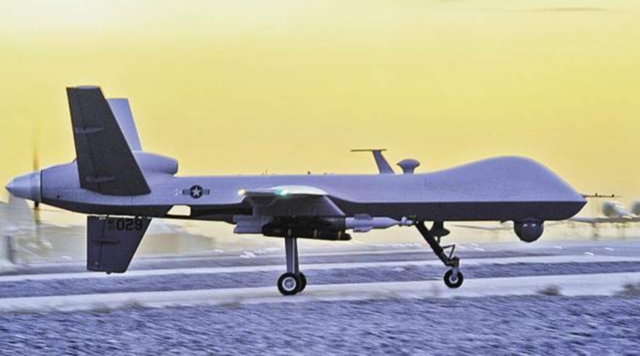Using a repurposed commercial satellite, US Air Force crews flew MQ-1 Predators and MQ-9 Reapers from Creech Air Force Base, Nev., during multiple missions in November and December.
A test team with the 53rd Test Management Group, Detachment 4 and led by Lt. Dan Broyles successfully demonstrated inclined orbit satellite capability for MQ-1 and MQ-9 to meet operational needs this year and beyond, said Major Joshua Williams, the detachment commander.
MQ-1 and MQ-9 remotely piloted aircraft were used during tests late last year to implement beyond line-of-sight capability using lower-cost, inclined orbit satellite communications.
“Inclined orbit satellites are older satellites that lack the fuel to maintain a fixed geostationary location and are allowed to drift into slightly ‘wobbling’ orbits,” said Lt. Col. Gary Rafnson, the 556th Test and Evaluation Squadron commander. “This wobbling requires users to use satellite dishes that move to track the satellites rather than fixed dishes like those used by satellite television providers.”
This technical difficulty limits the utility of inclined satellites for commercial users, resulting in reduced lease costs over traditional satellites.
“MQ-1 and MQ-9 programmes have integrated the required satellite tracking software and the 53rd Wing, as part of the Air Force RPA test community, developed procedures for continuously updating the satellite tracking data needed,” Rafnson said. “Leveraging space expertise, the RPA test community turned to the 17th Test Squadron at Schriever Air Force Base (Colo.) to guide them in obtaining the essential data from military rather than commercial sources. This ability to ingest satellite tracking data from the Joint Space Operations Center, Vandenberg Air Force Base (Calif.), will minimize the chance of errors and ensure the antennas point at the right location.”
For Air Combat Command, inclined orbit SATCOM provides a tangible, long-term savings opportunity, said Derek Jatho, the MQ-1 and MQ-9 communications lead. As an indicator of the type of savings that can be achieved, ACC’s latest lease for continental Unites States commercial SATCOM includes four inclined orbit SATCOM lines at approximately 50 percent savings over a typical lease.
“Increased (inclined orbit) SATCOM use, depending on availability, will further reduce the Air Force’s total annual SATCOM costs, and ACC plans to expand its use after sufficient evaluation,” said Col. Brian Pierson, the Intelligence, Surveillance and Reconnaissance Weapons Systems Division, Plans, Programs and Requirements directorate chief.

